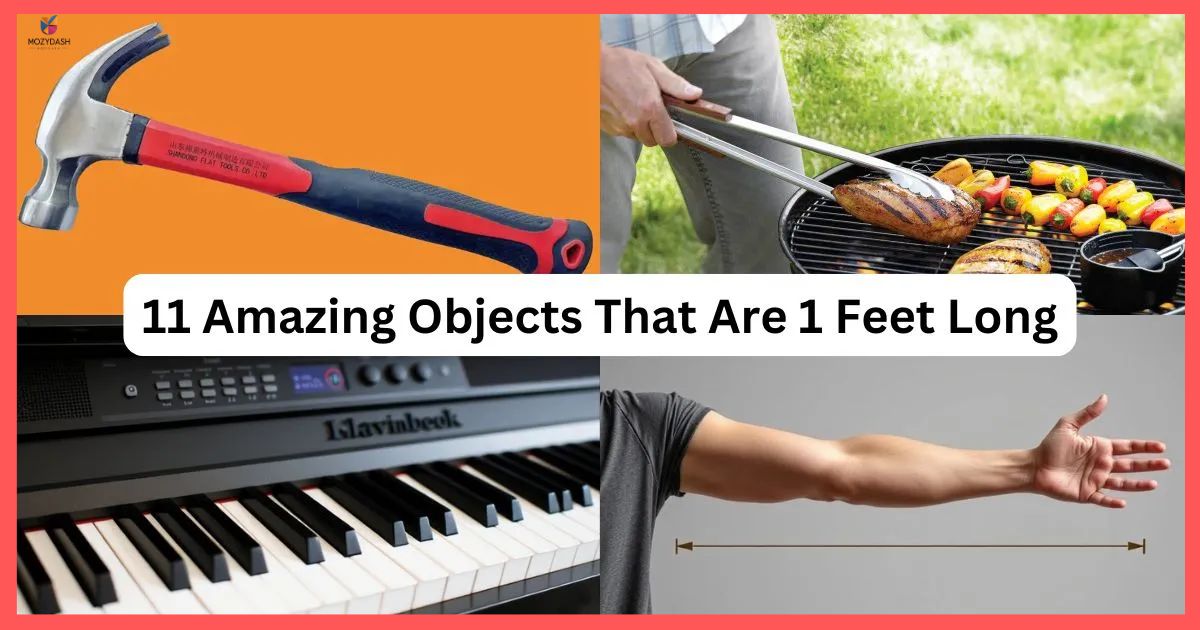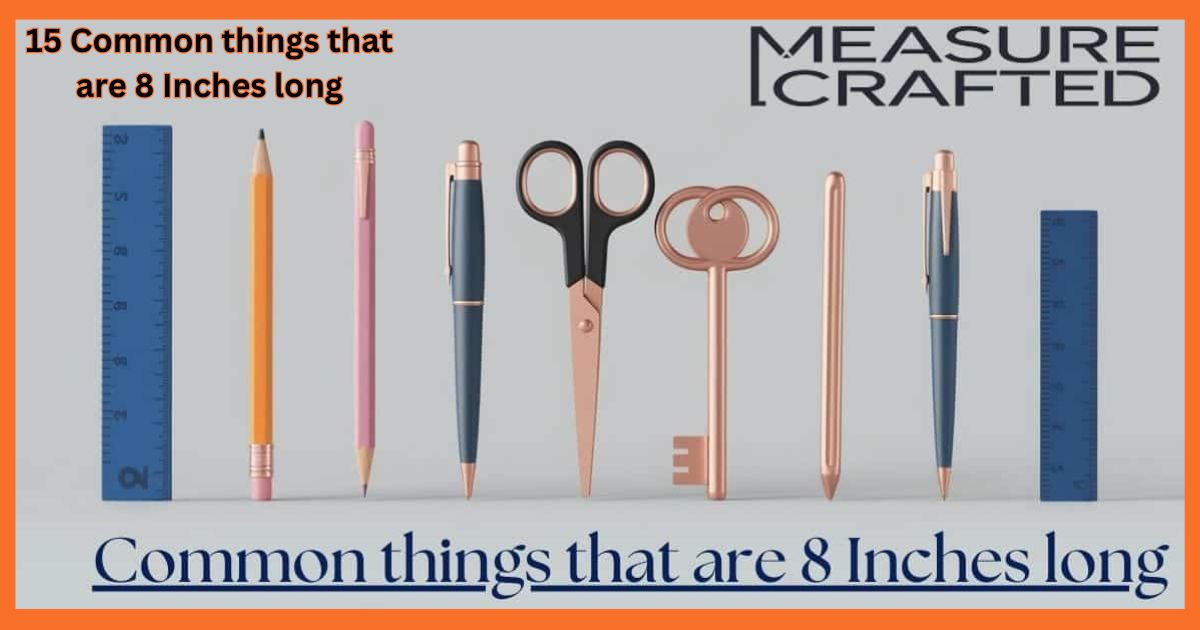When we hear the word “foot,” we often think about something relatively small, but it’s actually a measurement that’s deeply embedded in our daily lives. The foot has been used for thousands of years and remains one of the most practical units of length.
Whether you’re buying a new piece of furniture, shopping for clothes, or even measuring a piece of string, the foot is the standard you often reach for. But how exactly long is a foot? And how can you relate that measurement to everyday objects? Let’s dive into the fascinating world of the foot measurement and explore some common objects that are about one foot in length.
How Long is a Foot?
A foot is a unit of length in the imperial and U.S. customary measurement systems, equivalent to 12 inches or 30.48 centimeters. It’s used frequently in countries like the United States and the UK and is a standard measure in many industries, from construction to sports.
The foot might seem like a simple measurement, but understanding how long it is and its real-world applications can make a big difference when you’re engaged in tasks that require precise measurements.
To help make this measurement tangible, let’s look at some common objects that are approximately one foot long. You might be surprised to learn how much of your daily life involves things that are a foot in length, whether it’s your smartphone, a loaf of bread, or a typical ruler!
1. A Standard Ruler
One of the most common objects you’ll encounter that is exactly one foot long is a standard ruler. Rulers are essential in various settings, from schools to offices, and they provide a quick way to measure smaller objects and distances.
A foot-long ruler typically has 12 inches marked along its length, allowing for precise measurements in increments that are easy to read. The significance of the foot-long ruler is obvious—it’s the go-to tool for students, artists, engineers, and anyone else who needs to measure straight lines.
Whether you’re sketching, crafting, or working on a DIY project, understanding the foot-length of your ruler helps you keep track of dimensions without needing complex tools.
Interesting Fact: The length of a foot was originally based on the size of the human foot in ancient civilizations, and many rulers still carry the symbolism of the foot measurement in their design today.
2. A Loaf of Bread

Believe it or not, a typical loaf of bread is roughly one foot long! Most standard loaves, especially those sold in supermarkets, fall into this size range, though of course, there are variations depending on the type of bread and the brand. A foot-long loaf is usually the size that fits neatly into most breadboxes or kitchen counters, and it’s a convenient size for slicing into sandwich portions.
Why does this length matter? It’s all about consistency. The standard 12-inch loaf gives bakeries and customers alike a predictable, standardized size for both production and purchasing.
Imagine trying to bake a loaf that was irregularly shaped or too large—it could be difficult to store or slice. By keeping it to about a foot, bakeries can ensure that each loaf fits neatly in its packaging and meets consumer expectations.
Fun Fact: The length of a loaf of bread has varied through history, especially as bread-making evolved. In the past, bakers used to sell loaves of bread by weight, but today, they often focus on a consistent size to keep prices predictable.
3. A Guitar Neck

If you’re into music, you’re probably familiar with the neck of a guitar, which typically measures around one foot in length. While the overall length of a guitar can vary, the neck—the part where you fret the strings—is approximately one foot long for most standard acoustic and electric guitars.
The significance of this measurement goes beyond just its size—it’s about comfort and playability. A guitar neck that is about a foot long allows for easy hand positioning and fret access, especially when playing chords or soloing.
For beginners, this length also makes it easier to get familiar with the instrument, as it’s neither too short nor too long for most hand sizes. Interesting Fact: The length of the guitar neck, in combination with its scale length (the distance from the nut to the bridge), determines the overall sound and tone of the instrument. This foot-long neck is a crucial element in how a guitar feels and sounds.
Read This Blog: https://mozydash.com/5-inches/
4. A Shoe Size 12
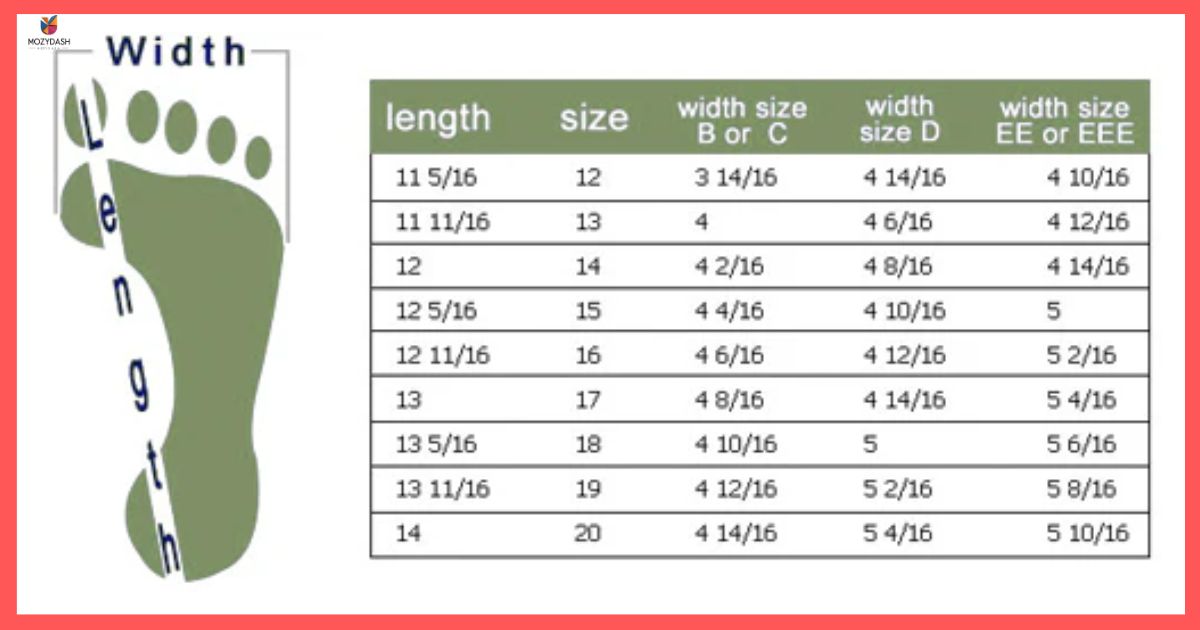
For many people, the measurement of one foot is more than just a unit—it’s a literal reference to their shoe size. A men’s size 12 shoe is approximately one foot long, and this measurement is crucial for ensuring a comfortable fit.
In fact, the term “foot” itself originated as a way to reference the length of a human foot. Knowing that a shoe size 12 is one foot in length can be very useful in practical applications like shopping for footwear or even designing spaces like closets.
If you ever find yourself guessing how much space a pair of shoes will take up, thinking about the size of a foot is a quick and accurate way to estimate. Fun Fact: Did you know that shoe sizes vary by country? A men’s size 12 in the U.S. is different from a size 12 in Europe, so it’s always a good idea to consult a sizing chart when shopping internationally.
5. A TV Remote Control
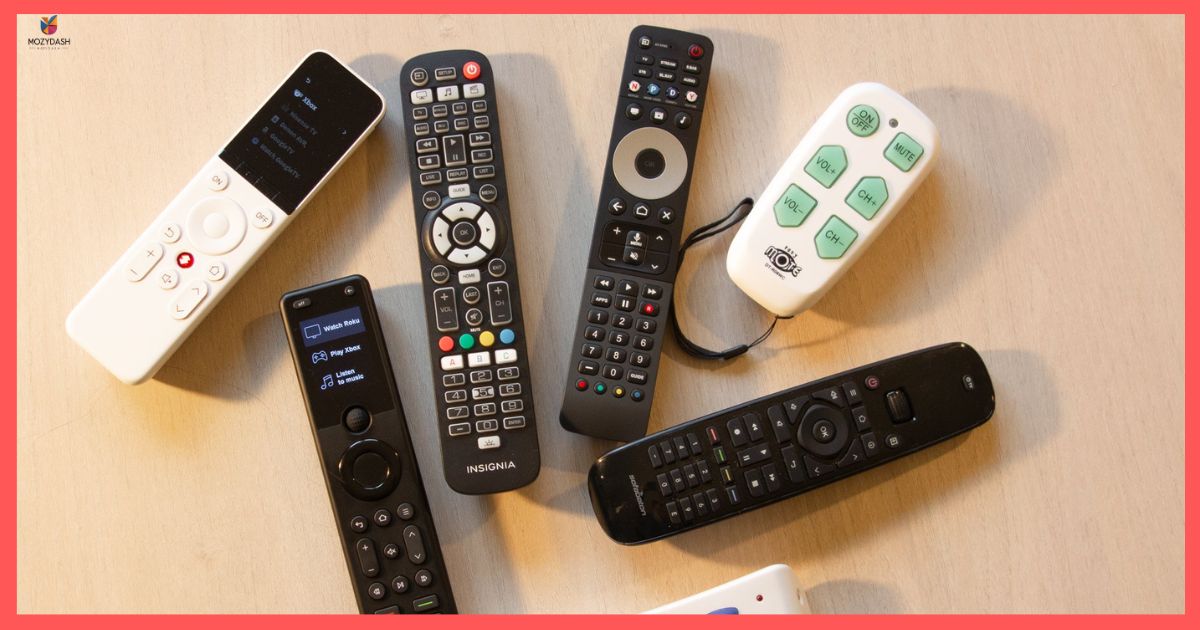
When you pick up your TV remote control, you might not realize that many standard remotes are about one foot long. These everyday objects are designed for convenience, so their size typically fits comfortably in the hand, making them easy to hold and operate.
Most remotes fall within the 10-12 inch range, and the design is optimized to give users control over their televisions without being too bulky. The foot-long remote control also serves a practical purpose in terms of ergonomics.
By making the remote this size, manufacturers ensure that it can be used effectively by people of various hand sizes and that it’s easy to store on a coffee table or in a drawer.
Did You Know?: The remote control was invented in 1950 by Robert Adler, and it quickly revolutionized the way people interacted with their televisions. Its ergonomic size has remained relatively consistent ever since!
6. A Standard Sheet of Paper
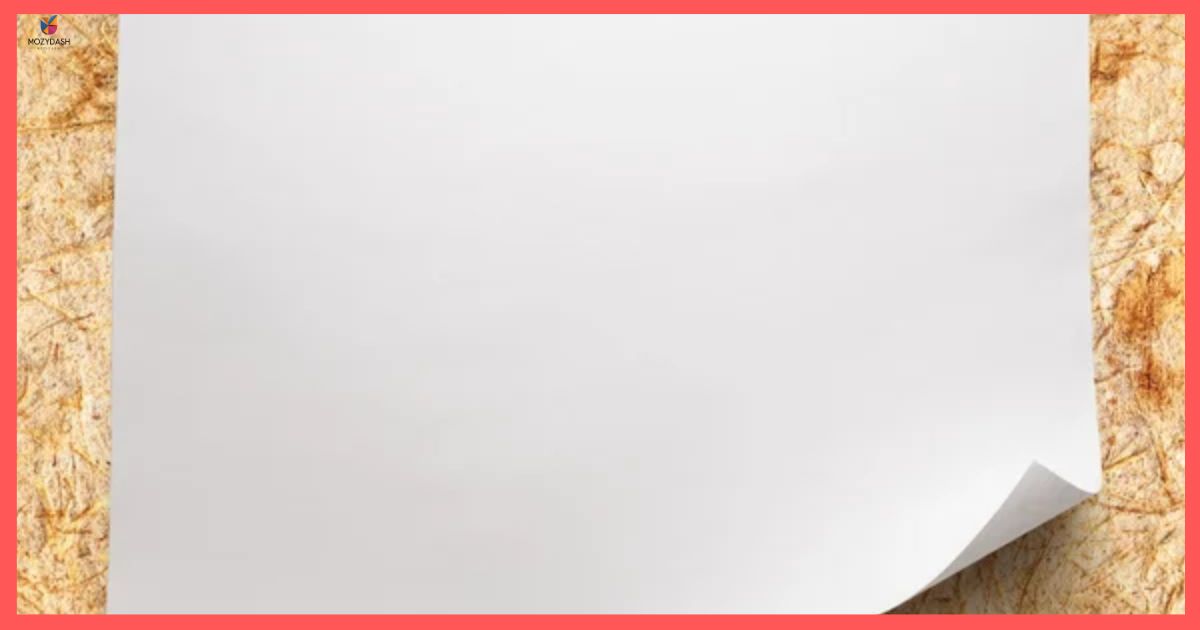
While it might seem a bit surprising, the length of a standard sheet of paper, especially the U.S. letter size (8.5 x 11 inches), is just shy of one foot in length. Although this paper size is actually slightly shorter than 12 inches, it’s still commonly referenced as the “footlong” size in many contexts.
This measurement is essential because it defines the dimensions of documents, books, and printing. In fact, most home and office printing revolves around this paper size.
Understanding this length helps ensure that documents are aligned correctly, particularly when designing or printing graphics or professional layouts. Interesting Fact: The U.S. letter size is one of the most commonly used paper sizes globally, but it differs from A4, the standard paper size in most other parts of the world. The U.S. letter size is slightly wider and shorter.
7. A Standard Car Tire

A standard car tire, specifically for a passenger vehicle, often measures around one foot in diameter. This size can vary depending on the make and model of the vehicle, but a typical passenger tire tends to fall within the 24–28 inch range, meaning it’s often close to one foot in diameter.
The foot measurement is crucial when it comes to tire sizing, as it ensures the tire fits properly on the wheel and meets safety and performance standards. The significance of the one-foot diameter is most noticeable when tires are being replaced or rotated.
Mechanics and drivers alike rely on these measurements to make sure the vehicle operates efficiently, providing adequate traction and stability on the road. This size also impacts the handling and comfort of the ride, with larger tires often associated with better grip but potentially a bumpier experience.
Fun Fact: Did you know that tires are one of the most recycled items in the world? Recycled tires are often used to create playground surfaces, roads, and even new tires!
8. A Standard Kitchen Knife

While kitchen knives vary in size, many of them are about one foot long, especially chef’s knives or utility knives. These knives typically measure between 8 and 12 inches in length, with the 12-inch variety just about the length of a foot.
The foot-long knife provides a good balance of versatility, allowing chefs and home cooks to cut, chop, and slice a variety of foods without being too bulky. This length is practical because it offers enough blade to handle larger vegetables or meats while still being manageable and easy to control.
The longer blade allows for more efficient cutting and less fatigue during extended meal preparation. Interesting Fact: The modern kitchen knife dates back to ancient civilizations, where knives were initially made from flint or obsidian. Today’s knives are crafted from high-quality stainless steel, ensuring durability and sharpness.
9. A Sheet of Towel Paper
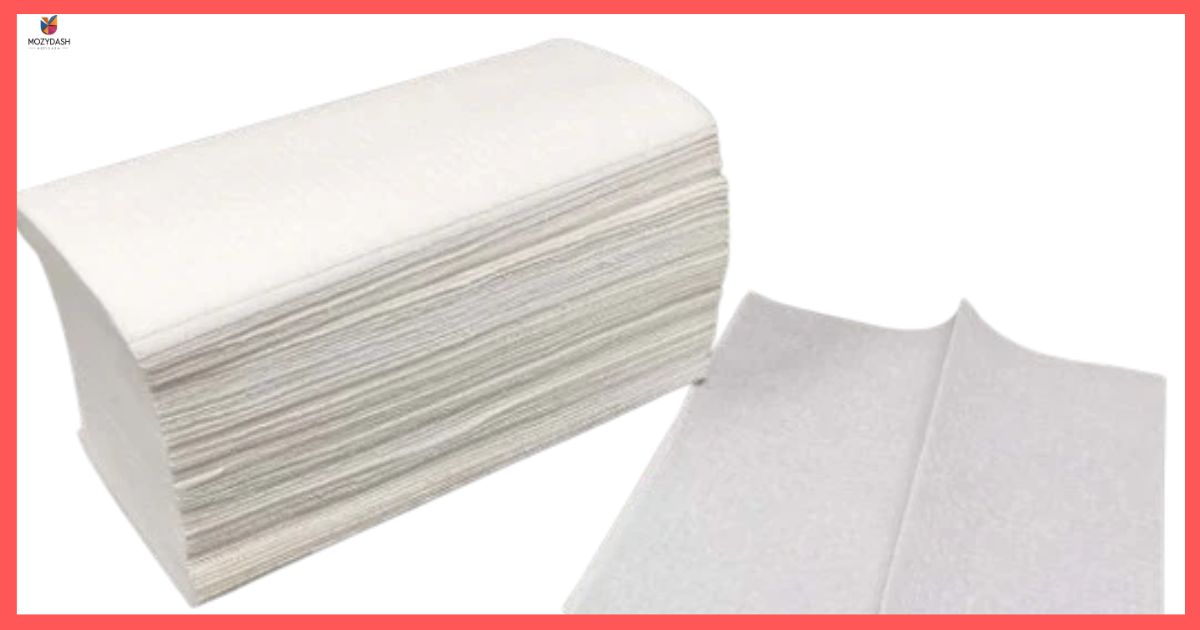
A standard roll of paper towel is often about 12 inches long when unrolled. Although the length of each sheet can vary depending on the brand, many rolls of paper towels feature sheets that are approximately 12 inches long.
This length makes the paper towels convenient for everyday cleaning tasks, from wiping down surfaces to soaking up spills. The length of the towel sheets is designed to provide a practical amount of material for cleaning without requiring too much excess.
It also allows consumers to easily gauge how much of the towel is left on the roll, helping with budgeting and planning. Whether you’re tackling a big cleaning project or just need to wipe your hands, understanding the foot-long length of a sheet is a useful tip.
Fun Fact: Did you know that paper towels were invented by accident in 1907? A manufacturer in the U.S. was trying to make toilet paper, but a mistake in the production process led to the creation of the first paper towels instead!
10. A Standard Baseball Glove

The length of a baseball glove varies depending on the player’s position, but many standard gloves for outfield players are about one foot in length from the base of the palm to the tip of the fingers.
The one-foot glove is designed to provide a perfect balance between flexibility and coverage, allowing players to catch balls with ease while still maintaining agility.
The foot-long glove plays an important role in player performance—especially for outfielders who need to cover large areas of the field. A glove of this size ensures that the player can scoop up balls without sacrificing the speed required for fast plays.
Fun Fact: The largest baseball glove ever made was a 12-foot-long glove created in 2009. It was designed as a promotional stunt and took over 10,000 hours to
Read this Blog:https://mozydash.com/5-inches/
11. A Standard Broomstick
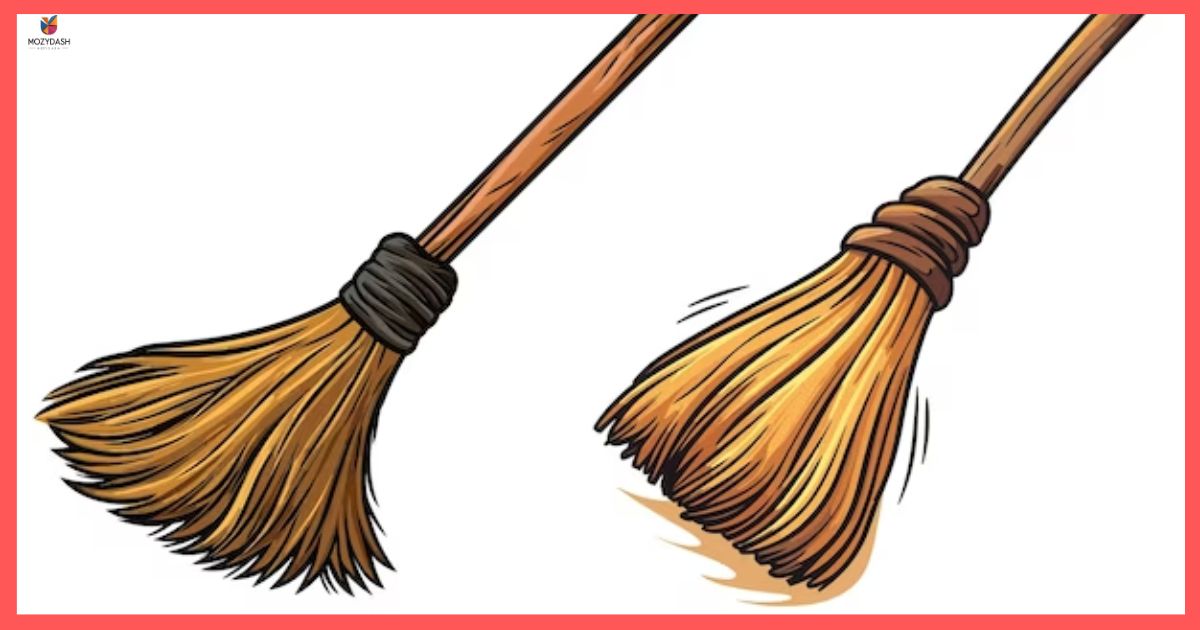
Many standard broomsticks, especially those used for household cleaning, are about one foot in length from the tip of the bristles to the end of the handle. This size is common in everyday cleaning tools, where the foot-long broomstick helps users efficiently sweep up dust and dirt without requiring excessive bending.
The length of the broomstick matters because it allows for optimal reach while ensuring comfort during cleaning tasks. A broomstick that’s too long could be awkward to use, while one that’s too short might make sweeping difficult.
The 12-inch length is ideal for most users to sweep with minimal effort. Interesting Fact: The broomstick design has been used for centuries! It was originally made from twigs tied together, but over time, it evolved into the more efficient design we use today.
12. A Standard Window Sill

In many homes and buildings, the height of a standard window sill is approximately one foot off the ground. This is the typical measurement for most residential windows, though variations can exist depending on the building’s architecture.
The height of a window sill is important for both aesthetic and functional reasons—it provides a space to place decorative items like plants, while also ensuring that the window is positioned for proper light flow.
The one-foot height of the window sill helps create an appropriate balance for light and privacy. It also ensures that windows can open and close easily while minimizing the risk of drafts.
This measurement plays a key role in the design and functionality of a home, affecting everything from airflow to natural lighting. Fun Fact: The position of window sills has varied throughout history. In the Middle Ages, window sills were often higher to allow for better protection and privacy from invaders.
Real-World Applications & Practical Measurement Tips
Understanding the length of a foot and how it relates to common objects in your daily life is incredibly useful. Whether you’re measuring for furniture, shopping for items like clothing or accessories, or even trying to estimate distances around the house, knowing that a foot is roughly the length of your shoe or a loaf of bread can help you make quick, accurate decisions.
If you find yourself without a ruler or tape measure, you can always rely on your feet! A quick estimate is to use the size of your foot (or a shoe) to gauge distances. Alternatively, if you don’t have anything immediately at hand, a smartphone screen is often about 6 inches in length, so you can stack two of them to get a foot.
Conclusion
From your shoe size to the length of a guitar neck or even the standard loaf of bread, the foot is a measurement that plays a role in many aspects of our lives. Understanding it not only gives you a better grasp of how to measure things around your home, but it also provides a deeper appreciation of how measurements can be linked to the physical world.
So, next time you’re out shopping, building something, or simply trying to estimate the size of an object, think about how many one-foot-long objects you can find around you—and challenge yourself to measure a few things without the aid of a tape measure!
By using these everyday examples of a foot in length, you can easily grasp the significance of this simple yet useful measurement. Whether you’re working on DIY projects, buying furniture, or even organizing your space, knowing how long a foot really is helps you make informed decisions and keeps things practical.

Rober max seo expert

